
How to Use DHT11: Examples, Pinouts, and Specs
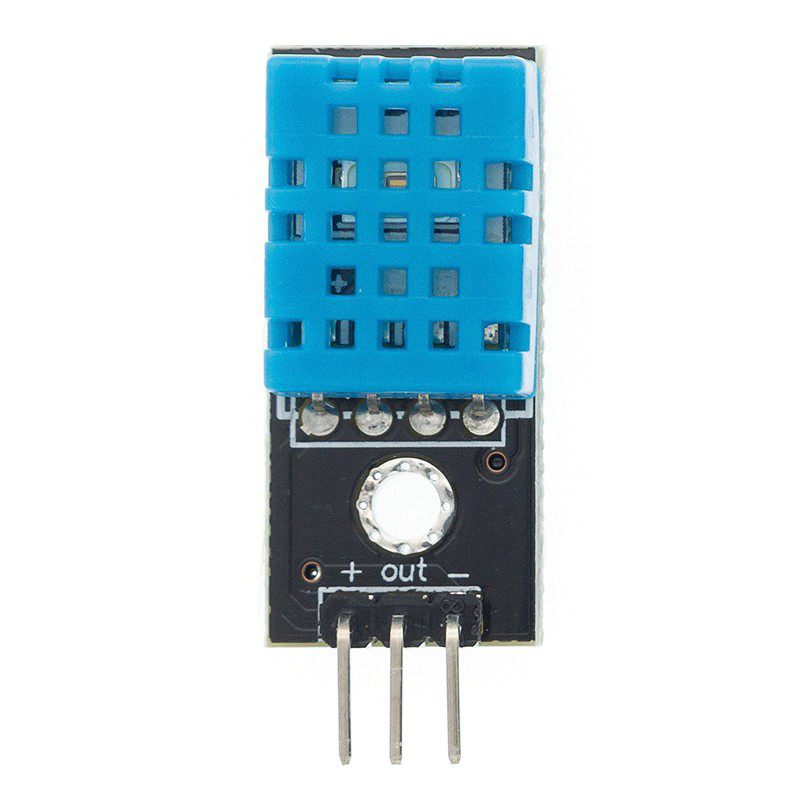
 Design with DHT11 in Cirkit Designer
Design with DHT11 in Cirkit DesignerIntroduction
The DHT11 is a widely used digital temperature and humidity sensor that provides reliable and accurate readings with a dedicated NTC temperature sensor and a capacitive humidity sensor. It is a basic and low-cost sensor that is suitable for hobbyist and educational projects. The DHT11 is commonly used in weather stations, home environmental control systems, and IoT applications where monitoring of ambient temperature and humidity is required.
Explore Projects Built with DHT11
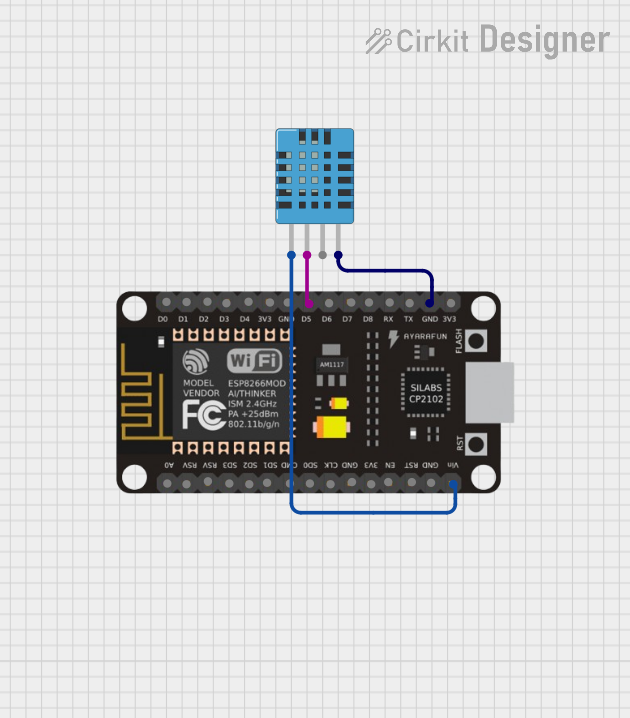
 Open Project in Cirkit Designer
Open Project in Cirkit Designer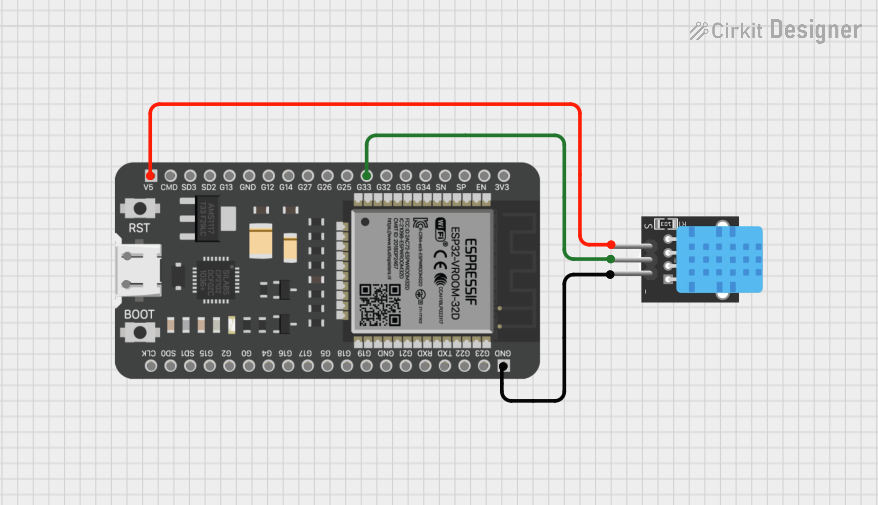
 Open Project in Cirkit Designer
Open Project in Cirkit Designer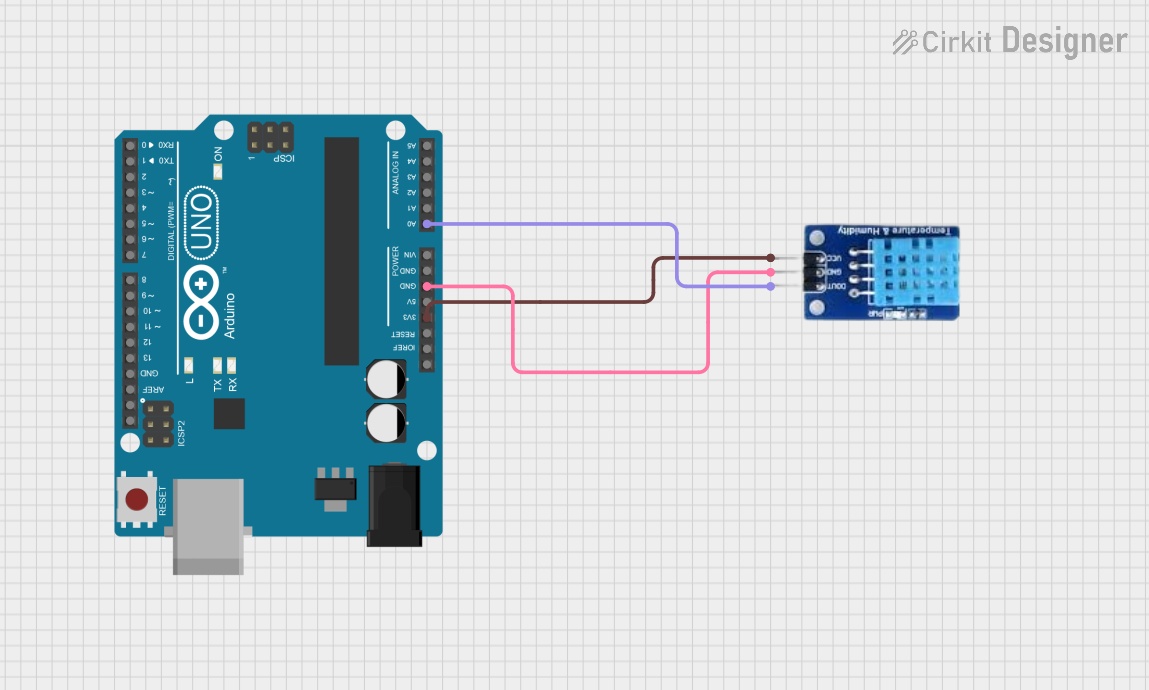
 Open Project in Cirkit Designer
Open Project in Cirkit Designer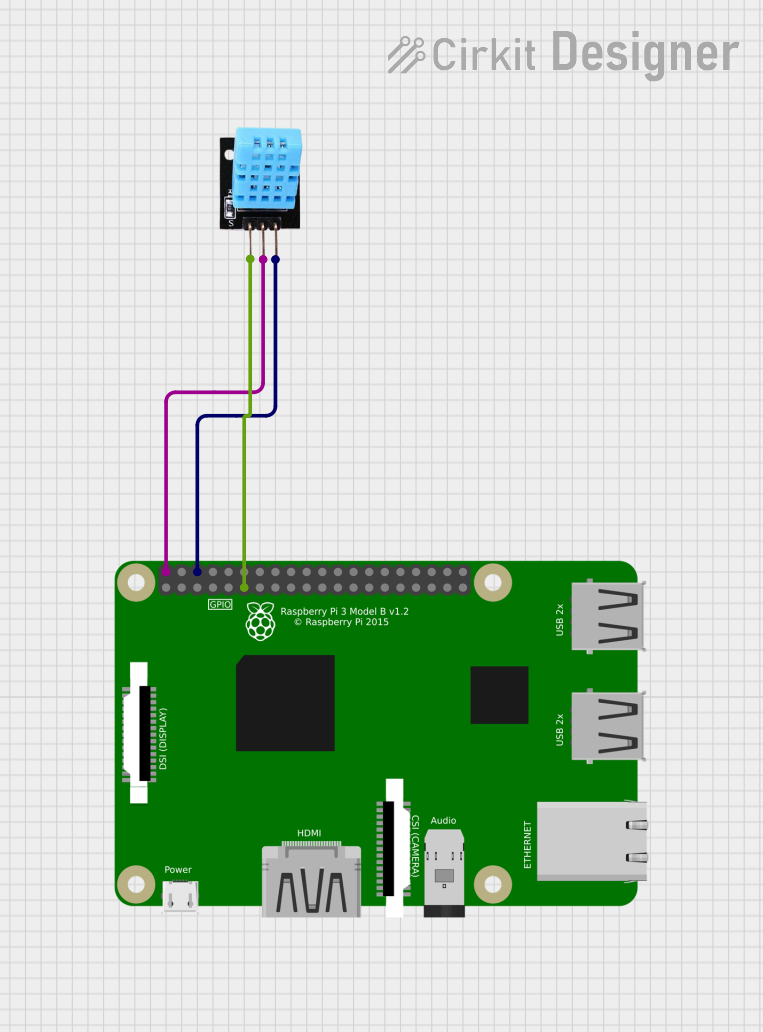
 Open Project in Cirkit Designer
Open Project in Cirkit DesignerExplore Projects Built with DHT11

 Open Project in Cirkit Designer
Open Project in Cirkit Designer
 Open Project in Cirkit Designer
Open Project in Cirkit Designer
 Open Project in Cirkit Designer
Open Project in Cirkit Designer
 Open Project in Cirkit Designer
Open Project in Cirkit DesignerTechnical Specifications
Key Technical Details
- Supply Voltage: 3 to 5.5 VDC
- Output Signal: Digital signal via a single data pin
- Humidity Measurement Range: 20 to 80% RH
- Humidity Accuracy: ±5% RH
- Temperature Measurement Range: 0 to 50°C
- Temperature Accuracy: ±2°C
- Resolution:
- Humidity 1% RH
- Temperature 1°C
- Sampling Rate: ≤ 1 Hz (once every second)
- Dimensions: 23mm x 12mm x 5mm (approx.)
Pin Configuration and Descriptions
| Pin Number | Name | Description |
|---|---|---|
| 1 | VCC | Power supply (3 to 5.5 VDC) |
| 2 | DATA | Digital data output |
| 3 | NC | Not connected |
| 4 | GND | Ground |
Usage Instructions
Integration with a Circuit
- Connect the VCC pin to a 3 to 5.5 V power supply.
- Connect the GND pin to the ground of the power supply.
- Connect the DATA pin to a digital input pin on a microcontroller, such as an Arduino UNO.
- A pull-up resistor (typically 4.7kΩ to 10kΩ) is required between the DATA pin and VCC.
Best Practices
- Avoid placing the sensor in direct sunlight or near heat sources to prevent inaccurate readings.
- Ensure that the sensor is not exposed to condensing levels of humidity.
- Allow the sensor to acclimatize to the environment for accurate readings.
- Use a cable length of less than 20 meters to prevent signal degradation.
Example Code for Arduino UNO
#include "DHT.h"
#define DHTPIN 2 // Digital pin connected to the DHT sensor
#define DHTTYPE DHT11 // DHT 11
DHT dht(DHTPIN, DHTTYPE);
void setup() {
Serial.begin(9600);
dht.begin();
}
void loop() {
// Wait a few seconds between measurements.
delay(2000);
// Reading temperature or humidity takes about 250 milliseconds!
float humidity = dht.readHumidity();
float temperature = dht.readTemperature();
// Check if any reads failed and exit early (to try again).
if (isnan(humidity) || isnan(temperature)) {
Serial.println("Failed to read from DHT sensor!");
return;
}
// Compute heat index in Celsius (isFahrenheit = false)
float heatIndex = dht.computeHeatIndex(temperature, humidity, false);
Serial.print("Humidity: ");
Serial.print(humidity);
Serial.print("% Temperature: ");
Serial.print(temperature);
Serial.print("°C Heat index: ");
Serial.print(heatIndex);
Serial.println("°C");
}
Note: The above code uses the DHT sensor library, which can be installed via the Arduino Library Manager.
Troubleshooting and FAQs
Common Issues
- Inaccurate Readings: Ensure the sensor is not affected by heat sources or direct sunlight. Allow it to acclimatize.
- No Data: Check the wiring, especially the pull-up resistor on the DATA pin. Ensure the power supply is within the specified range.
- Erratic Readings: Ensure there is no condensation on the sensor. Use shorter cables if possible.
FAQs
Q: Can the DHT11 sensor be used outdoors? A: Yes, but it should be protected from direct sunlight, rain, and condensation for accurate measurements.
Q: How long does the DHT11 sensor last? A: The DHT11 has a typical lifespan of 3-5 years, depending on usage conditions.
Q: Is calibration required for the DHT11 sensor? A: The DHT11 comes pre-calibrated from the factory and does not typically require additional calibration.
Q: Can I use the DHT11 sensor with a 3.3V supply? A: Yes, the DHT11 can operate with a supply voltage from 3 to 5.5 VDC.
For further assistance, consult the datasheet provided by the manufacturer or contact technical support.